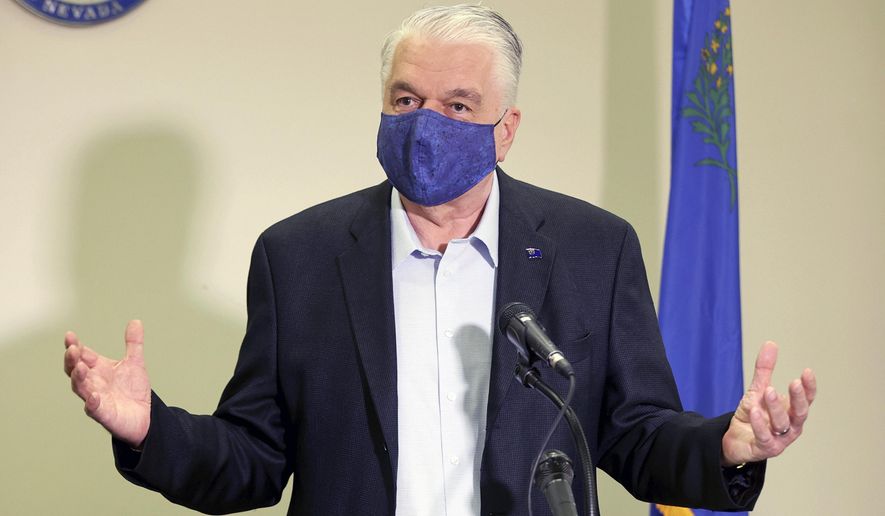CARSON CITY, Nev. (AP) - Nevada expects its population to grow by roughly 160,000 people by 2023, but Gov. Steve Sisolak’s budget for the upcoming two years doesn’t project expenses rising as a result.
Fueled by optimism about the pending arrival of COVID-19 vaccines, state forecasters projected in December that tourists would slowly return and the economy would rebound to pre-pandemic levels. Sisolak originally asked all state agencies to plan for 12% cuts, but the forecasts allowed him to restore the majority of education funding and reverse the 6% cuts to the amount the state reimburses Medicaid providers.
Sisolak’s budget for the upcoming two years outlines $8.7 billion in general fund spending - $187 million less than he proposed before the start of the last two-year cycle in 2019.
He released the proposal last week, and lawmakers have been discussing it in committee hearings. The Legislature convenes Monday, and lawmakers will use Sisolak’s budget as a baseline as they work to pass their own and send it back to him for approval.
State forecasters and the governor have stressed that revenue and cost estimates could change drastically depending on the trajectory of the coronavirus pandemic and the economy.
The budget relies on assumptions about population growth, its effect on the costs of services that the state provides and about the collective bargaining underway between the state and unions for public workers.
In recent years, Nevada has been among the fastest-growing states in the U.S., and the state demographer projects the population will increase to 3.3 million by the end of the two-year budget cycle in 2023. The U.S. Census Bureau estimated Nevada’s population to be 3.14 million in July 2020.
Continued growth could place more strain on state services - adding students to classrooms, inmates to prisons and Medicaid recipients to the state’s rolls, said Brian Bonnenfant, project manager of the University of Nevada, Reno’s Center for Regional Studies.
Bonnenfant said the projections matched Nevada’s 2019 growth rate but lagged behind years prior.
“It’s probably a conservative estimate,” he said. “It means we’re growing at a decreasing rate.”
But with the pandemic accelerating the transition to remote work in many industries, it’s difficult to predict whether people may move throughout the U.S. and where, Bonnenfant said.
The pandemic may also dictate who moves to Nevada - whether its college-educated workers, families with children or retirees, which could raise costs for the state. Sisolak’s budget proposal doesn’t project major cost increases to follow the population growth.
The budget expects the prison population to decrease due to recently passed criminal justice reforms and K-12 enrollment to remain relatively flat. Medicaid enrollment has grown by 18.7% over the past two years, but the budget projects the growth rate to slow to 2.2%.
Jim Wells, who served as former Gov. Brian Sandoval’s finance director, said that in general, Medicaid caseloads tend to increase as the population grows.
But he said projections made by Sisolak’s staff are conservative. More than 1 in 5 residents is now enrolled in Medicaid, and if employment rebounds, it’s unlikely to remain at such high levels, Wells said.
The number of students in public schools has remained relatively flat in recent years, but that could change amid the pandemic if Nevada moves away from charter schools or if parents decide to home-school their children.
___
Sam Metz is a corps member for the Associated Press/Report for America Statehouse News Initiative. Report for America is a nonprofit national service program that places journalists in local newsrooms to report on undercovered issues.




Please read our comment policy before commenting.